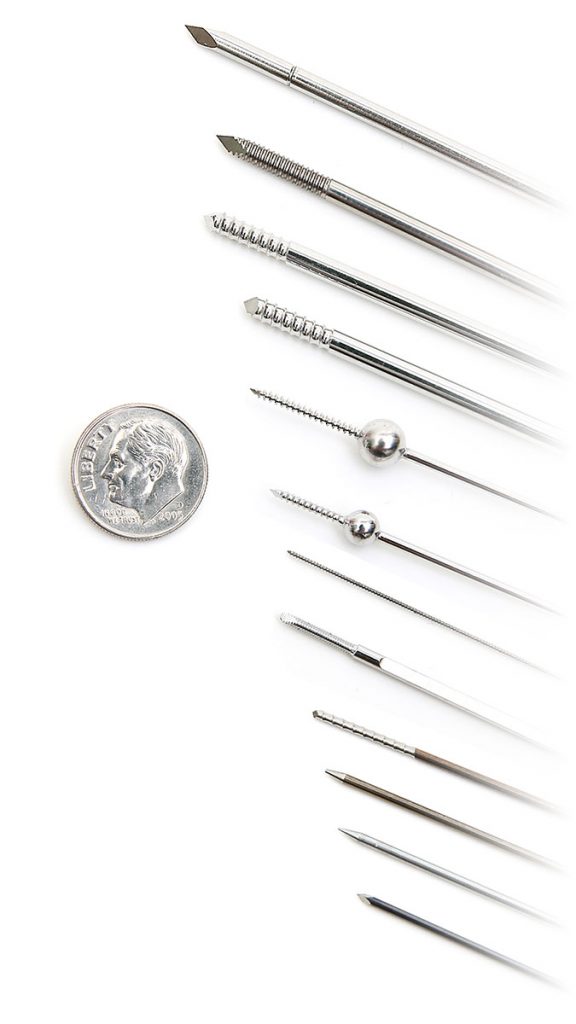
K-wires are commonly used in hand, wrist, elbow, ankle, and foot injuries. Bone sizes can vary widely between patients: from adults and teens versus children, males versus females, and those with short, thin bones versus large, thick bones. Based on a patient’s skeletal architecture and the surgical placement, different K-wires may be more successfully applied.
Wire size is but one parameter that can have a bearing on the surgical outcome of K-wire procedures. K-wire tips, threading, and insertion technique are additional considerations for the varied surgical applications.
History of Steinmann Pins and Kirschner Wires
Originally developed and used by Martin Kirschner in 1909, K-wires have been in existence for over a century. Since the original conception, many modifications have improved the Kirschner wire designs and how they are used in today’s surgical procedures. For example, different tips have been developed to accommodate specific fractures, surgical procedures, and K-wire techniques. Also, numerous research studies have been conducted to assess the impact of tip selection, wire diameter, and insertion methods on heat-related complications.
The early years of K-wires were typically used for skeletal traction and the method of application was hammering them through a pre-drilled hole in the cortex. Prior to his death in 1942, Kirschner developed a device that made it possible to manually hammer a K-wire.
With the refinements of Kirschner wires, veterinarians have adapted their animal surgical procedures to incorporate K-wires. By applying Kirschner surgical techniques, veterinarians have found it easier to repair broken bones with K-wires than with plates and screws. Because the K-wires can be inserted more quickly, the modified procedure reduces surgical operating time, which lowers the overall cost for pet owners.
Modern Orthopedic Wires For OEM’s
Custom Wire technologies manufactures K-wires, Steinmann Pins, & Olive Wires in strict adherence to customer specifications, primarily using certified materials such as 304V Stainless Steel, 316LVM Stainless Steel, or Nitinol (Nickel Titanium).
If you are interested in learning more or are in need of a custom solution, please reach out to CWt today to discuss your next project.



